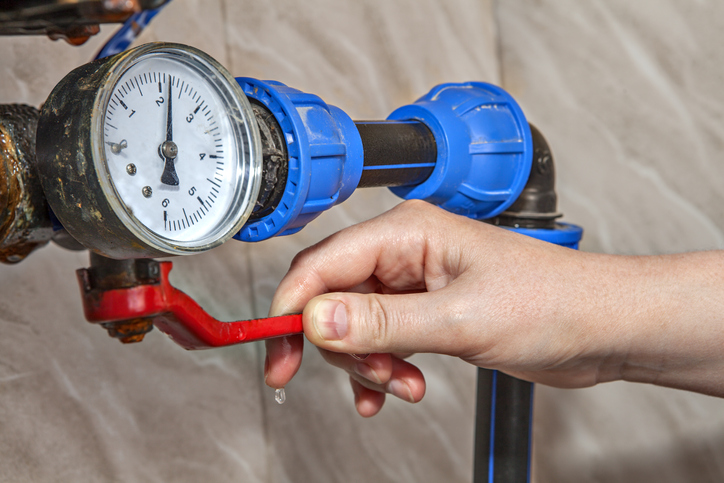Fluid handling applications are crucial in various industries, including lab diagnostics, water treatment, and chemical processing. These applications require reliable and efficient systems to control the flow, pressure, and movement of fluids.
Injection molding has emerged as a preferred manufacturing method for producing plastic parts used in fluid handling systems, such as piston pumps, valves, seals, sensors, and sample vessels.
Let’s take an in-depth look into the role of injection molding in fluid handling industries, including the design considerations, manufacturing process, and quality assurance measures associated with producing injection-molded fluid handling components.
Understanding Fluid Handling Applications
Fluid handling applications encompass a wide range of industries and systems that deal with the movement and control of fluids. Some examples of fluid handling applications include laboratory diagnostics equipment, pharmaceutical processing systems, water treatment plants, and chemical distribution systems. These applications often face common challenges such as precise fluid measurement, maintaining flow consistency, avoiding contamination, and ensuring system reliability.
The Importance of Reliable and Efficient Fluid Handling Systems
Reliable and efficient fluid handling systems are essential for maintaining process accuracy, minimizing downtime, and ensuring product quality. Failures or inefficiencies in fluid handling components can lead to system malfunctions, inaccurate measurements, and costly repairs. Therefore, it is crucial to design and manufacture fluid handling parts that meet performance requirements and withstand the challenges of the application environment.
Design Considerations
Injection molding offers several advantages for producing plastic parts used in fluid handling applications. The design of these components plays a critical role in their functionality and reliability.
Factors to consider when designing injection-molded fluid handling components include:
- Material selection based on chemical compatibility and performance requirements: Fluid handling components must be made from materials that are compatible with the fluids being handled and can withstand the required temperature, pressure, and chemical exposure.
- Design for manufacturability and ease of assembly: Designing parts with injection molding in mind can improve manufacturing efficiency and reduce costs. Considerations such as draft angles, wall thickness, and gating locations can optimize the molding process and facilitate ease of assembly.
- Integration of features for improved functionality and performance: Injection molding allows for the integration of complex geometries, such as internal channels, threads, and sealing surfaces, which enhance the functionality and performance of fluid handling components.
- Design validation and testing: Simulations and prototyping can help validate the design of fluid handling components before moving into production. Testing the prototypes under realistic conditions ensures that the parts meet the required performance standards.
Manufacturing Process for Injection Molded Fluid Handling Parts
The injection molding process involves several steps, including mold design and tooling, material handling and preparation, machine selection and setup, and quality control and inspection.
Specific considerations for manufacturing components in fluid handling applications include:
- Mold design and tooling: The mold design should accommodate the required part geometry, gating, and ejection mechanisms. Additionally, proper venting and cooling channels are essential for achieving high-quality parts and efficient production cycles.
- Material handling and prep: Careful selection and handling of materials are critical to ensure consistency and quality throughout the injection molding process. Resin drying, colorant mixing (if applicable), and material quality checks are crucial steps.
- Injection molding machine selection and setup: The choice of injection molding machine depends on factors such as part size, complexity, and production volume. Proper machine setup–including temperature control, injection speed, and pressure–is essential for achieving accurate and defect-free parts.
- Quality control and inspection: Regular quality control checks and inspections during and after the molding process help identify any defects or variations. Dimensional measurements, visual inspections, and material testing contribute to ensuring the overall quality of the fluid handling components.
Performance Testing and Quality Assurance
Once injection-molded fluid handling components are manufactured, it is crucial to assess their performance and ensure they meet the required standards.
We recommend that our customers perform the following tests on their finished parts:
- Pressure and leakage testing: Components such as valves, seals, and sample vessels undergo pressure and leakage tests to ensure their ability to withstand the required fluid pressures and maintain a tight seal.
- Flow rate and accuracy testing: Fluid handling systems often require precise flow control. Testing the flow rate and accuracy of components such as pumps and sensors ensures their ability to deliver consistent and accurate fluid flow measurements.
- Chemical compatibility testing: Material compatibility with the handled fluids is critical to avoid chemical reactions, degradation, or contamination. Chemical compatibility testing ensures that the chosen materials can withstand exposure to specific fluids over the desired lifespan.
- Durability and fatigue testing: Fluid handling components must endure repeated use and exposure to challenging operating conditions. Durability and fatigue testing simulate real-world conditions to assess the lifespan and reliability of the components.
Quality assurance measures, including statistical process control, regular inspections, and traceability systems, play a crucial role in ensuring consistent quality throughout the manufacturing process. By implementing robust quality control processes, manufacturers can identify and rectify any issues, thereby reducing the risk of product failure or malfunction.
Ensinger PC Provides the Parts Needed for Your Fluid Handling Application
When it comes to reliable and high-quality fluid handling components, Ensinger delivers expertise in injection molding and a commitment to meeting industry-specific requirements, offering a wide range of plastic parts for fluid handling applications.
Ensinger understands the importance of material selection, design optimization, and stringent quality control in fluid handling industries. Our products are designed to meet chemical compatibility, temperature resistance, and performance requirements. With a focus on precision and durability, Ensinger provides components such as piston pumps, valves, seals, sensors, and sample vessels that are essential for fluid handling applications.
Get in touch with our team today to explore our range of fluid-handling components and learn more about Ensinger’s capabilities.
